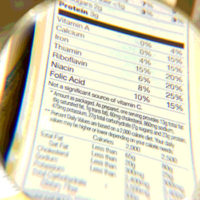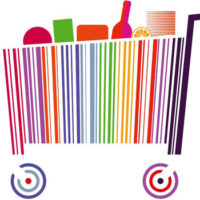The Food Safety Modernization Act regulations surrounding compliance, a competitive food market, and a stressed supply chain have put pressures of liability, food safety compliance, and cost on food industry professionals. One of the most economical, long-lasting ways to reduce these pressures comes from restaurant Industrial Internet of Things (IIoT) systems, such as the Sealevel SeaConnect 370 Restaurant kit and SeaCloud SaaS system.
What is Restaurant IIoT?
Even the best-kept kitchens and food management groups are finding that good staff and checklists aren’t enough to mitigate risk related to compliance, liability, and operating costs. Unfortunately, the sudden onslaught of technology solutions—created by the big data and Industry 4.0 revolutions—has daunted some food management groups. Upgrading to new tools has been a slow process.
Although some large franchises, such as Panera Bread Company and McDonald’s, have launched into automating tasks and digitizing point of service, they are still exploring further advancements. Smaller restauranteurs tend to be even further behind. While larger organizations can fund extensive employee training and gradually roll out technology, smaller establishments require intuitive, easy-to-implement tools. All food safety professionals seek durable designs that are configurable and able to be retrofitted to food preparation areas.
IIoT has repeatedly shown up as a winner. With the right IIoT device and monitoring system, owners are reducing liability, meeting compliance easily, and saving long-term costs through small investment solutions. Restaurant IIoT has proven itself extremely useful with benefits such as constant monitoring, notifications, cloud management with app interfaces, and reliable documentation that integrates well with analysis software.
Not all restaurant IIoT systems are built the same, however. Some require original installation due to being hardwired into electrical or other infrastructural systems. Others are extremely technical, designed to be administrated by IT professionals that service other systems in the establishment. Many require extensive training and suffer from issues related to security vulnerabilities, such as physical or cybersecurity weaknesses. The latter is extremely important as these devices can carry essential data or provide access to networks if maliciously accessed. Finally, some systems employ expensive materials and accessories, such as wireless sensors.
User-friendly, small investment, durable, and reliable restaurant IIoT is the key to successful technology upgrades. The Sealevel SeaConnect 370 and SeaCloud SaaS system is a plug-and-play solution with minimal access points, a simple web-based user interface, and highly versatile 1-Wire ports. Able to be retrofitted to any kitchen, it works on WiFi or cellular systems, with easily installed wired sensors providing high-quality data collection at lower costs than wireless systems.
The 370C in Review: Preventing Food Loss and Predicting Maintenance
A seaside American restaurant required a technology solution to issues related to food spoilage, compliance, and liability. Located in a popular beach town, the peak summer season led to several high-risk factors. The two fridge appliances were older and more likely to fail during the summer due to overuse and high operating temperatures, leading to food spoilage and waste. Moreover, the summer staff was larger and composed of seasonal employees. Consequently, cooler monitoring was often forgotten, neglected, or poorly documented, leading to concerns about compliance. Finally, the inconsistent but large dining crowds put pressure on the cold chain system, leaving risks of the coolers being left open and the prep station being improperly cooled due to inaccurate thermal settings. This latter circumstance raised red flags about liability related to foodborne illness.
Installing a cellular Sealevel SeaConnect 370 system with three wired temperature sensors, two pressure sensors, and two voltage sensors helped tackle these concerns. The edge device was mounted in a central location visible to kitchen staff. Two of the 1-wire temperature sensors extended five feet: one into the industrial fridge and the walk-in freezer. The other sensor monitored the sandwich prep station, where a cold case of sandwich toppings was located. The two pressure sensors were mounted on the doorways of the two cooler units. The voltage sensors were integrated, one each on the refrigerator and freezer, to monitor the voltage passing from the electrical system to the units.
Using the web-based SeaConnect interface, the various sensors were individually configured for both measurement intervals and event notifications.
- The temperature sensors measured temperature continually at 2-minute intervals. If the system detected a temperature measurement over 39 °F, a text message was sent to the kitchen tablet, the manager’s cell phone, and the owner’s device. The recorded temperatures were logged in the SeaCloud SaaS software for historical use and future analysis. Software-generated reports led to optimized cooler settings during peak usage and diminished energy usage.
- The pressure sensors detected whether the doors were open or closed. If the door was open for too long, it notified the kitchen tablet.
- The voltage sensors measured voltage continually at 5-minute intervals. If the voltage read below 120 V at any interval, a text message was sent to the manager’s cell phone, the owner’s device, and the restaurant’s technician. The data were stored in the SeaCloud SaaS software. Voltage instability over measurements was noted, and reports were used to schedule predictive maintenance or prevent failure.
Within 1 week of installation and usage, the restaurant experienced a power failure overnight. The SeaConnect 370 detected rising temperatures in the restaurant’s freezer. The owner was notified immediately and was able to prevent food spoilage by removing supplies to a backup freezer. The cooler was repaired quickly. This system of cold chain monitoring and event notification prevented $5,000 of food loss.
Best Practices for Restaurant IIoT
In order to reduce the risks of food spoilage, foodborne illness, human error, and noncompliance, consider installing a cost-effective restaurant IIoT system.
- Real-time, continuous, or constant cold-chain monitoring is a key way to guarantee that foods are staying cold. According to Texas A&M University’s Agricultural blog, the number one way after proper sanitation to reduce foodborne illness is to ensure foods remain refrigerated properly. This prevents food spoilage as well, which is an expensive loss.
- Run systems over reliable networks, such as cellular. WiFi only devices are subject to failures caused by power outages. Using cellular systems maintains a steady flow of information.
- Moreover, staying aware of appliance vulnerabilities is a great practice to prevent costly malfunctions or dangerous downtime. Monitoring voltage use, or other predictive maintenance factors, can indicate potential issues before they become real problems.
- Finally, relying on automated processes to reduce the risk of human error. Sealevel Systems application engineer Will Rostron says, “It sounds simple, but the fact is that consistent documentation can be a challenge [if it] relies on human memory and reliability.”
Leah VanSyckel, marketing communications for Sealevel Systems, Inc., spends most of her days writing blogs and white papers for focus industries. Sealevel is an American-owned designer and manufacturer of critical communication products, I/O, and industrial computers.




